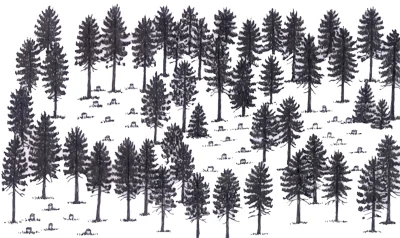Landowners should never be surprised; take a look at example harvests. Want to see it in person? We'll take you on-site to see results before you make a decision.
Select cut harvest
A select cut harvest includes thinning your woodlot for forest health and proper spacing. Mature, over-mature, poor-form and diseased trees are harvested in order to offer more nutrients, sunlight and water to remaining trees.
Clear cut harvest
Many tree species in Michigan require fire, wind and other natural disasters to regenerate. Clear cut harvests are conducted in order to simulate a natural disaster and stimulate young seedlings. Seedlings in a clear cut area regenerate from root and stump sprouting from harvested trees; regeneration also occurs through existing seeds in the seed bank along with adjacent trees casting seed onto the cut area.
forest GAP OPENING HARVEST
Gap openings simulate a small scale natural disaster such as a wind storm, pocket decay or small fire. This type of opening is smaller scale than a clear cut. A Forest Gap Opening Harvest is done to promote more shade tolerant species which require less sunlight to grow, but require a clearing space to establish and grow into the canopy.
SHELTERWOOD / SEED TREE HAREST
Scattered seed trees are left after a heavy harvest about 20-30 feet between residual trees. The goal is to grow an entire new cohort of seedlings. The scattered remaining trees provide shelter for the cohort of seedlings growing in the understory. This harvest is finalized with an overstory removal.
ROW THINNING
Row thinning is typically done in a plantation setting whereby every third row is removed and the inside rows are thinned. The new space creates room for remaining trees to increase their wood fiber. Many plantations in Michigan during the 1930's were planted by the Civilian Conservation Core, resulting in the rows of primarily red and white pine visible from state highways and parks.






